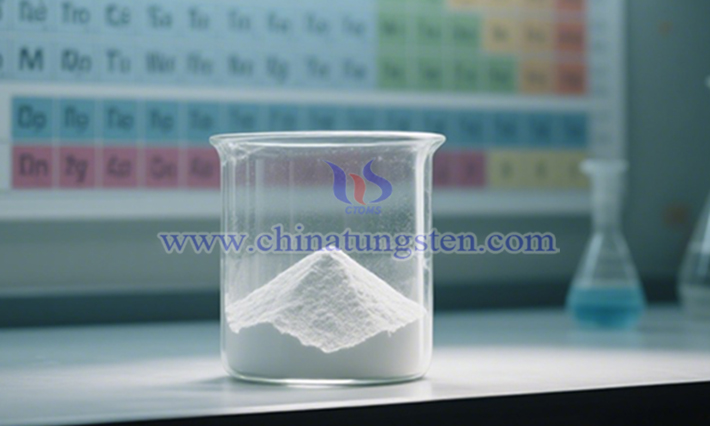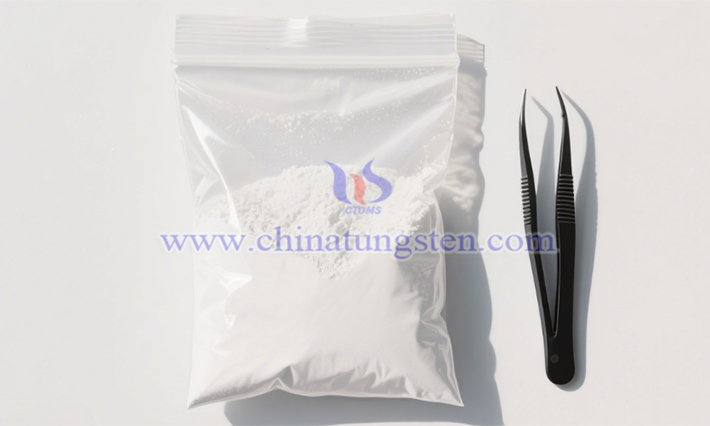What Is Ferrous Tungstate?
- Details
- Category: Tungsten Information
- Published on Thursday, 03 July 2025 11:32
- Written by Xiaoting
- Hits: 111
Within the broad field of transition metal compounds, ferrous tungstate (FeWO₄) stands out as a representative example of an iron-group element combined with tungstate, gaining prominence in chemical and materials science research due to its unique physicochemical properties and versatile application potential. This tungstate, formed by Fe²⁺ and (WO₄)²⁻, not only inherits the magnetic commonality of iron-group elements but also exhibits rich functional characteristics due to the introduction of the tungsten-oxygen framework, opening new pathways in catalysis, energy storage, and inorganic material preparation.

The chemical composition of ferrous tungstate traces back to its elemental origins: as a fourth-period, Group VIII iron-group element, iron (atomic number 26) belongs to the same transition metal family as cobalt and nickel, all sharing ferromagnetic properties and similar valence electron configurations. When Fe²⁺ combines with tungstate ions [(WO₄)²⁻], it forms FeWO₄ crystals with an orthorhombic structure, boasting a molar mass of 303.68. From a crystal structure perspective, the tetrahedral configuration of the tungstate ion interacts with the coordination environment of Fe²⁺, contributing to its density of 7.5 g/cm³ and insolubility in water. These properties enable its stable presence in natural minerals like wolframite and provide a structural basis for synthetic production.
The typical preparation process for ferrous tungstate uses 1-histidine as a structure-directing agent within a water-ethylene glycol mixed solvent system: First, sodium tungstate is dissolved in a transparent histidine-containing solution, followed by the addition of ferrous sulfate to form a yellow precursor solution. After adjusting the pH to 5–10, the mixture undergoes hydrothermal reaction in an autoclave, culminating in filtration, washing, and drying to yield sheet-like or flower-like nanoparticles. The core advantages of this process include: cost control through the use of common inorganic salts, avoiding rare reagent consumption; morphology regulation via the synergistic effect of the structure-directing agent and pH, enabling controlled nanoparticle growth; and operational simplicity, as the hydrothermal method eliminates the need for high-temperature sintering, reducing energy consumption and equipment requirements. This "bottom-up" synthesis strategy lays a foundation for the targeted application of FeWO₄ in functional materials.

The application scenarios of ferrous tungstate span traditional and emerging fields, with its functional properties adapting flexibly to context: As a raw material for inorganic pigments and dyes, the metal ion coordination structure of FeWO₄ provides stable coloration. In ceramic materials, its high-temperature resistance and chemical stability enhance the mechanical strength of glazes. As a catalyst and corrosion inhibitor, the redox properties of the tungstate ion combined with the variable valence of Fe²⁺ create synergistic catalytic centers, suitable for organic synthesis and anticorrosive coating systems. When combined with multi-walled carbon nanotubes via hydrothermal methods, the resulting composite electrode material demonstrates the high specific capacitance and cycling stability required for supercapacitors.
- Chinatungsten Online: www.chinatungsten.com
- CTIA GROUP LTD: en.ctia.group
- Tungsten News & Price: www.ctia.com.cn
- Molybdenum News & Price: news.molybdenum.com.cn
- Tel.: 86 592 5129696; Email: sales@chinatungsten.com





 sales@chinatungsten.com
sales@chinatungsten.com